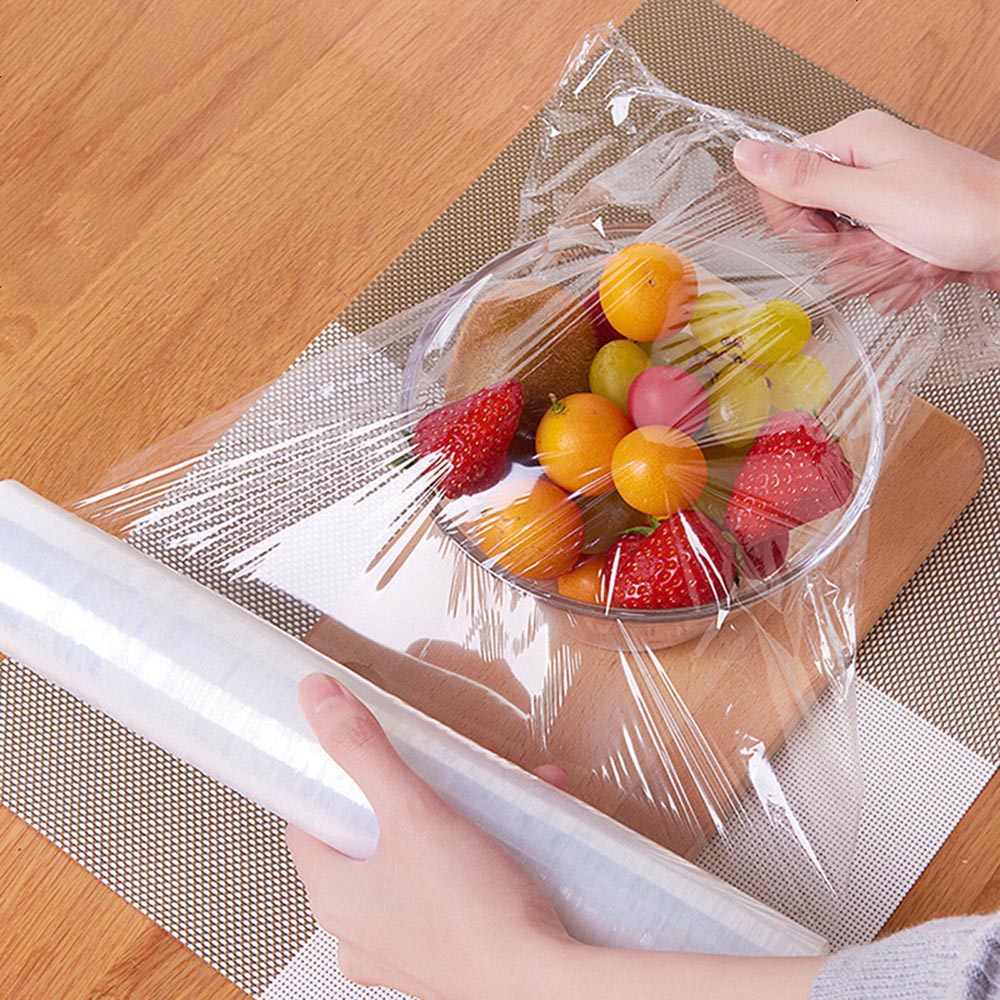When you wrap fresh produce or leftovers with PVC cling film, you probably don’t think about the complex chemistry that keeps that thin plastic sheet flexible, transparent, and safe for food contact. Yet behind every roll of high-quality PVC cling film is a critical component: the PVC stabilizer. These unsung additives play a vital role in preventing degradation, ensuring safety, and maintaining performance—making them essential to food packaging applications.
Why PVC Cling Films Need Specialized Stabilizers
PVC is inherently unstable when exposed to heat, light, and mechanical stress during processing and end-use. Without proper stabilization, PVC undergoes degradation, releasing harmful hydrochloric acid and causing the material to become brittle, discolored, and unsafe for food contact.
For cling films specifically, the challenges are unique:
• They require exceptional transparency to showcase food products
• Must maintain flexibility at various temperatures
• Need to resist degradation during high-temperature processing
• Must comply with strict food safety regulations
• Require long-term stability during storage and use
Key Requirements for Food-Grade PVC Stabilizers
Not all PVC stabilizers are suitable for food contact applications. The best stabilizers for PVC cling films must meet rigorous standards:
Regulatory Compliance
Food-grade PVC stabilizers must adhere to strict regulations worldwide. In the United States, FDA’s 21 CFR Part 177 governs plastic materials in food contact, limiting additives like phthalates to no more than 0.1% in PVC products. European regulations (EU 10/2011) similarly restrict harmful substances and set migration limits to ensure consumer safety.
Non-Toxic Formulation
Traditional lead-based stabilizers, once common in PVC processing, have been largely phased out in food applications due to toxicity concerns. Modern food-grade stabilizers avoid heavy metals entirely, focusing on safer alternatives.
Thermal Stability
Cling film production involves high-temperature extrusion and calendering processes that can cause PVC degradation. Effective stabilizers must provide robust thermal protection during manufacturing while maintaining the film’s integrity.
Transparency Maintenance
Unlike many PVC products, cling films require exceptional clarity. The best stabilizers disperse evenly without creating haze or affecting optical properties.
Compatibility with Other Additives
Stabilizers must work harmoniously with plasticizers, lubricants, and other additives in the cling film formulation to maintain overall performance.
Top Stabilizer Options for PVC Cling Films
While various stabilizer chemistries exist, two types have emerged as leading choices for food-grade cling films:
Calcium-Zinc (Ca-Zn) Stabilizers
Calcium-zinc stabilizers have become the gold standard for food-grade PVC applications. These non-toxic, environmentally friendly additives offer an excellent balance of performance and safety:
Calcium zinc stabilizer is a non-toxic option free of harmful metals and other hazardous chemicals, making it a new type of environmentally friendly stabilizer for PVC.
Key advantages include:
• Excellent thermal stability during processing
• Good weatherability and resistance to yellowing
• High-efficiency lubricity that improves extrusion speed
• Good compatibility with PVC resin and other additives
• Compliance with major food contact regulations
• Ability to maintain transparency in thin films
UV Stabilizers for Extended Protection
While not primary thermal stabilizers, UV absorbers play an important role in preserving cling film integrity during storage and use. These additives are particularly valuable for cling films used in transparent packaging exposed to light.
How to Select the Right Stabilizer for Your Cling Film Application
Choosing the optimal stabilizer requires balancing multiple factors:
• Regulatory Compliance: Verify compliance with regional food safety standards (FDA, EU 10/2011, etc.) for your target markets.
• Processing Requirements: Consider your specific manufacturing conditions—higher temperature processes may require more robust thermal stability.
• Performance Needs: Evaluate clarity requirements, flexibility needs, and expected shelf life for your cling film products.
• Compatibility: Ensure the stabilizer works well with your plasticizers and other additives.
• Sustainability: Look for stabilizers that support environmental goals through low toxicity and reduced environmental impact.
• Cost-Effectiveness: Balance performance benefits against formulation costs, considering both additive concentration and processing efficiency gains.
The Future of PVC Stabilizers in Food Packaging
As consumer demand for safe, high-performance food packaging continues to grow, PVC stabilizer technology will evolve to meet new challenges. We can expect to see:
• Further improvements in thermal stability at lower additive concentrations
• Enhanced formulations that support recycling and circular economy goals
• New stabilizer blends optimized for specific cling film applications
• Advanced testing methods to ensure safety and performance
• Continued regulatory evolution driving innovation in non-toxic alternatives
Innovations in the field of materials science are unlocking new potential for PVC stabilizers, with research focused on developing even more efficient, sustainable solutions for food packaging applications.
Investing in Quality Stabilizers for Superior Cling Films
The right PVC stabilizer is fundamental to producing high-quality, safe, and compliant cling films for food packaging. While calcium-zinc stabilizers currently lead the market for their excellent balance of safety and performance, ongoing innovation promises even better solutions in the future.
By prioritizing regulatory compliance, performance characteristics, and environmental considerations, manufacturers can select stabilizers that not only meet current requirements but position their products for future success in a rapidly evolving market.
As the PVC stabilizer market continues its steady growth, the importance of these critical additives in ensuring the safety and performance of food-grade cling films will only increase—making informed stabilizer selection more important than ever.
Post time: Sep-22-2025



